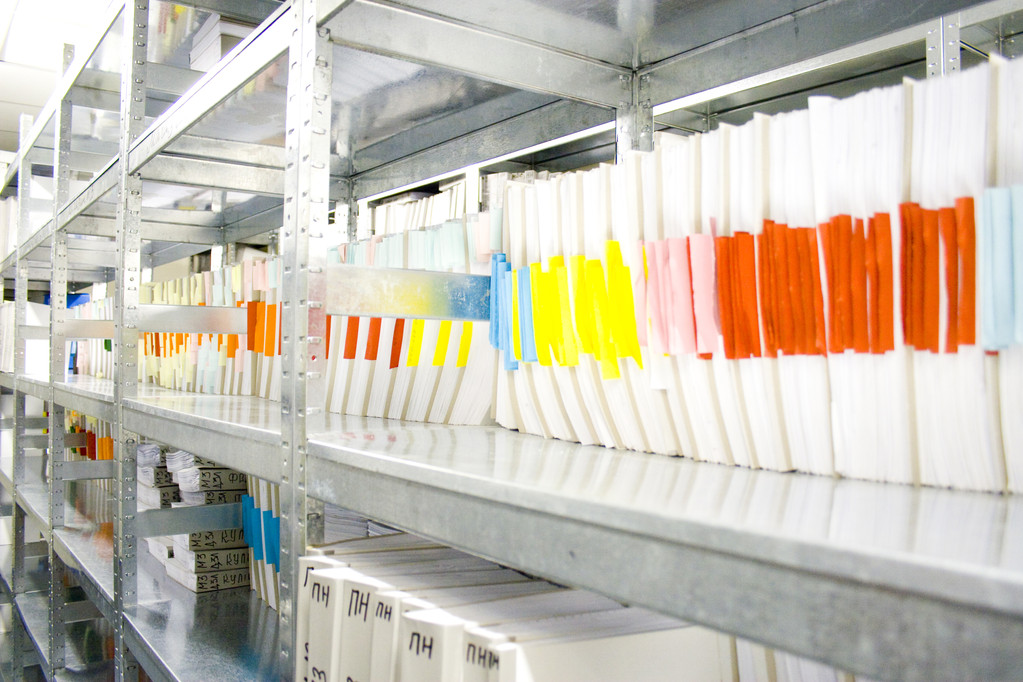Multiplexing is an essential concept in modern communication systems. It plays a key role in transmitting multiple signals over a single communication channel, allowing for more efficient use of available resources. But what exactly is multiplexing, and how does it work? we’ll break it down into simple, easy-to-understand terms without the need for technical jargon.
Explore Understanding Multiplexing
Multiplexing is the process of combining several individual signals into one signal for transmission over a shared medium, such as a cable or wireless channel. After transmission, the combined signal is separated back into its original individual signals.
The main advantage of multiplexing is that it enables the sharing of a single communication channel for multiple transmissions. This helps save bandwidth, reduces costs, and improves the efficiency of data transmission.
How Does Multiplexing Work?

To understand how multiplexing works, think of it as a highway with multiple lanes. Each lane represents a separate data stream or signal. Multiplexing helps all these signals travel down the same highway at the same time without colliding with each other.
At the receiving end, another process called demultiplexing happens, where the combined signal is separated back into individual signals and sent to the correct destination.
Here’s a simple step-by-step breakdown of the multiplexing process:
- Input Signals: Multiple signals (audio, video, data, etc.) are prepared for transmission.
- Combining Signals: The signals are combined into one signal using a multiplexer.
- Transmission: The combined signal is transmitted over the shared communication channel.
- Demultiplexing: At the receiver’s end, the signal is separated back into its original form using a demultiplexer.
- Output Signals: The separated signals are sent to their respective destinations.
Types of Multiplexing

There are several types of multiplexing, each with its own specific method of combining and transmitting signals. The most commonly used types include:
- Time Division Multiplexing (TDM)
- Frequency Division Multiplexing (FDM)
- Wavelength Division Multiplexing (WDM)
- Code Division Multiplexing (CDM)
Let’s more into each type to understand how they differ.
1. Time Division Multiplexing (TDM)
TDM is a method where multiple signals are transmitted by dividing the time available on a channel into small time slots. Each signal is assigned a specific time slot to use the channel, and the signals are transmitted in rapid succession, one after the other.
- How it Works: Imagine you are at a roundtable meeting, and each participant gets a chance to speak for a set amount of time. After one person finishes, the next one takes their turn, and so on. In TDM, each signal gets a specific “time slot” to be transmitted.
- Use Cases: TDM is commonly used in telecommunication systems, such as digital telephone networks, where multiple phone calls can share the same communication line without interfering with each other.
| Feature | Description |
|---|---|
| Signal Allocation | Time-based |
| Best Use Case | Telephone networks |
| Transmission Efficiency | High |
2. Frequency Division Multiplexing (FDM)
FDM is a method where multiple signals are transmitted at different frequencies within the same communication channel. Each signal uses its own frequency band, and they are transmitted simultaneously without interfering with one another.
- How it Works: Think of FDM like a radio station. Different stations broadcast on different frequencies, but they all share the same airspace. You can tune into your preferred station without hearing other broadcasts because each signal has its unique frequency.
- Use Cases: FDM is often used in radio and TV broadcasting, where multiple channels are transmitted over the same frequency spectrum.
| Feature | Description |
|---|---|
| Signal Allocation | Frequency-based |
| Best Use Case | Radio and TV broadcasting |
| Transmission Efficiency | Medium |
3. Wavelength Division Multiplexing (WDM)
WDM is similar to FDM but is specifically used for optical signals transmitted over fiber optic cables. Each signal is transmitted on a different wavelength (colour) of light, allowing for multiple signals to travel through the same fibre at the same time.
- How it Works: Picture a rainbow, where different colours represent different signals. Each colour travels through the same medium (light) but is separated by its wavelength. WDM works by transmitting data over these different “colours” of light simultaneously.
- Use Cases: WDM is widely used in fiber optic communication systems, particularly in high-speed internet and data networks.
| Feature | Description |
|---|---|
| Signal Allocation | Wavelength-based (optical) |
| Best Use Case | Fiber optic networks |
| Transmission Efficiency | Very high |
4. Code Division Multiplexing (CDM)
CDM is a more advanced method where multiple signals are transmitted using unique codes. Each signal is encoded with a unique code before transmission, and the receiver can identify and separate the signals by decoding them.
- How it Works: Imagine being in a crowded room where multiple people speak different languages. If you only understand one language, you can focus on that specific conversation and ignore the others. Similarly, CDM encodes each signal with a unique code, allowing the receiver to focus only on the desired signal.
- Use Cases: CDM is used in mobile communication systems like 3G networks, allowing multiple users to share the same frequency band without interference.
| Feature | Description |
|---|---|
| Signal Allocation | Code-based |
| Best Use Case | Mobile networks |
| Transmission Efficiency | High |
Applications of Multiplexing in Daily Life

You might not realize it, but multiplexing is all around us. Here are some everyday examples of how multiplexing is used:
- Telecommunications: Multiplexing is the backbone of phone networks, allowing multiple phone calls to be transmitted over the same line.
- Internet Data Transmission: Multiplexing is used to manage the flow of Internet traffic, enabling multiple devices to connect to the Internet simultaneously.
- Television Broadcasting: TV stations use multiplexing to broadcast several channels over the same frequency.
- Satellite Communication: Multiplexing allows multiple signals to be transmitted and received by satellites without interference.
Why is Multiplexing Important?
Multiplexing is critical in today’s world for several reasons:
- Efficient Use of Resources: By allowing multiple signals to share the same communication channel, multiplexing helps maximize bandwidth and reduces the need for additional infrastructure.
- Cost-Effectiveness: Multiplexing reduces the cost of communication by minimizing the number of cables, transmitters, and other equipment needed to transmit multiple signals.
- Improved Performance: Multiplexing increases the speed and efficiency of data transmission, especially in high-traffic networks like the Internet or mobile communication systems.
Challenges and Limitations of Multiplexing
While multiplexing has many advantages, there are some challenges and limitations to be aware of:
- Signal Interference: In some cases, signals may interfere with each other if not properly separated, leading to a loss of data or degraded quality.
- Complexity: Multiplexing systems can be technically complex and require specialized equipment for both transmitting and receiving signals.
- Cost of Implementation: Although multiplexing reduces the need for additional infrastructure, setting up and maintaining multiplexing systems can still be expensive, especially for large-scale operations.
Future Trends in Multiplexing Technology
As technology evolves, multiplexing continues to play a vital role in the future of communication. Some emerging trends include:
- 5G and Beyond: Multiplexing will be an integral part of the 5G network rollout, enabling faster data speeds and improved connectivity for a growing number of devices.
- Quantum Multiplexing: Researchers are exploring the potential of quantum multiplexing, where quantum signals could be multiplexed for faster and more secure communication systems.
- Advanced Optical Networks: With the demand for high-speed internet increasing, advances in WDM technology are paving the way for even faster and more efficient optical communication systems.
Conclusion
Multiplexing is a fundamental concept in modern communication, enabling multiple signals to share the same channel efficiently. Whether it’s used in phone networks, internet connections, or broadcasting, multiplexing helps improve performance, reduce costs, and make the best use of available resources.
From Time Division to Wavelength Division Multiplexing, each method has its own unique approach to managing and transmitting multiple signals. As we continue to rely more on digital communication, multiplexing will remain a critical technology that keeps us connected.
Our FAQs Related Multiplexing
1. What is multiplexing?
Multiplexing is the process of combining multiple signals into one for transmission over a shared communication channel and separating them at the receiving end.
2. What is Time Division Multiplexing (TDM)?
TDM is a method of multiplexing where signals take turns using the channel by being assigned specific time slots.
3. How is multiplexing used in everyday life?
Multiplexing is used in telecommunications, internet data transmission, TV broadcasting, and satellite communication.
4. What are the main challenges of multiplexing?
Challenges include signal interference, system complexity, and the cost of setting up multiplexing systems.
5. What is the future of multiplexing?
Future trends include advancements in 5G, quantum multiplexing, and more efficient optical communication systems.


